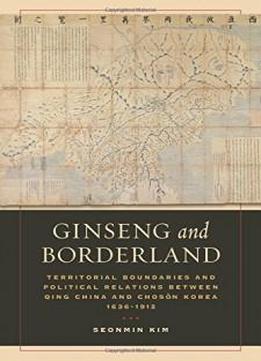
Ginseng And Borderland: Territorial Boundaries And Political Relations Between Qing China And Choson Korea, 1636-1912
by Seonmin Kim /
2017 / English / PDF
15 MB Download
A free ebook version of this title will be available
through Luminos, University of California Press’s Open
Access publishing program. Visit www.luminosoa.org to
learn more.
A free ebook version of this title will be available
through Luminos, University of California Press’s Open
Access publishing program. Visit www.luminosoa.org to
learn more.Ginseng and Borderland
Ginseng and Borderland explores the territorial boundaries
and political relations between Qing China and Choson Korea
during the period from the early seventeenth to the late
nineteenth centuries. By examining a unique body of materials
written in Chinese, Manchu, and Korean, and building on recent
studies in New Qing History, Seonmin Kim adds new perspectives to
current understandings of the remarkable transformation of the
Manchu Qing dynasty (1636–1912) from a tribal state to a
universal empire. This book discusses early Manchu history and
explores the Qing Empire’s policy of controlling Manchuria and
Choson Korea. Kim also contributes to theKorean history of the
Choson dynasty (1392–1910) by challenging conventional accounts
that embrace a China-centered interpretation of the tributary
relationship between the two polities, stressing instead the
agency of Choson Korea in the formation of the Qing Empire. This
study demonstrates how Koreans interpreted and employed this
relationship in order to preserve the boundary—and peace—with the
suzerain power. By focusing on the historical significance of the
China-Korea boundary, this book defines the nature of the Qing
Empire through the dynamics of contacts and conflicts under both
the cultural and material frameworks of its tributary
relationship with Choson Korea.
explores the territorial boundaries
and political relations between Qing China and Choson Korea
during the period from the early seventeenth to the late
nineteenth centuries. By examining a unique body of materials
written in Chinese, Manchu, and Korean, and building on recent
studies in New Qing History, Seonmin Kim adds new perspectives to
current understandings of the remarkable transformation of the
Manchu Qing dynasty (1636–1912) from a tribal state to a
universal empire. This book discusses early Manchu history and
explores the Qing Empire’s policy of controlling Manchuria and
Choson Korea. Kim also contributes to theKorean history of the
Choson dynasty (1392–1910) by challenging conventional accounts
that embrace a China-centered interpretation of the tributary
relationship between the two polities, stressing instead the
agency of Choson Korea in the formation of the Qing Empire. This
study demonstrates how Koreans interpreted and employed this
relationship in order to preserve the boundary—and peace—with the
suzerain power. By focusing on the historical significance of the
China-Korea boundary, this book defines the nature of the Qing
Empire through the dynamics of contacts and conflicts under both
the cultural and material frameworks of its tributary
relationship with Choson Korea.











